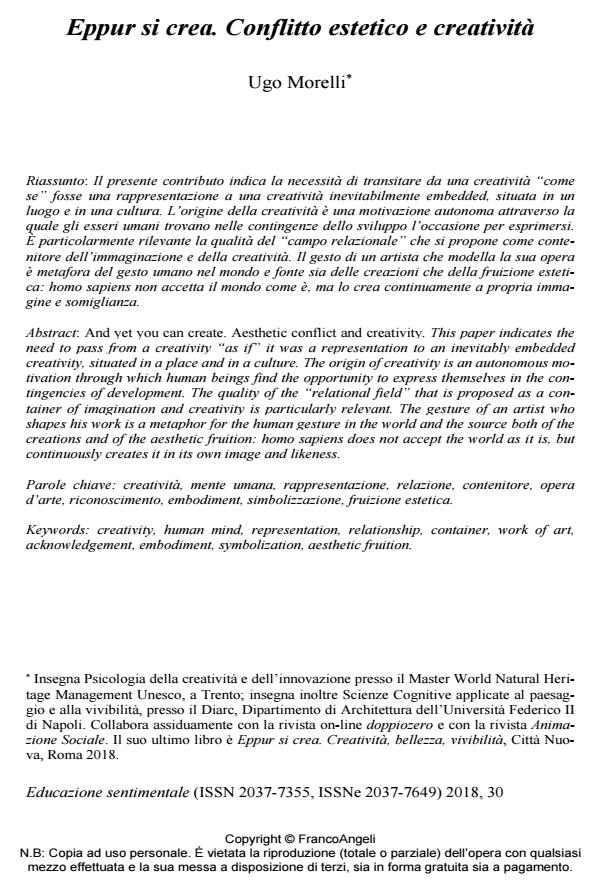And yet you can create. Aesthetic conflict and creativity.
Journal title EDUCAZIONE SENTIMENTALE
Author/s Ugo Morelli
Publishing Year 2019 Issue 2018/30
Language Italian Pages 14 P. 64-77 File size 291 KB
DOI 10.3280/EDS2018-030009
DOI is like a bar code for intellectual property: to have more infomation
click here
Below, you can see the article first page
If you want to buy this article in PDF format, you can do it, following the instructions to buy download credits

FrancoAngeli is member of Publishers International Linking Association, Inc (PILA), a not-for-profit association which run the CrossRef service enabling links to and from online scholarly content.
This paper indicates the need to pass from a creativity "as if" it was a representation to an inevitably embedded creativity, situated in a place and in a culture. The origin of creativity is an autonomous motivation through which human beings find the opportunity to express themselves in the contingencies of development. The quality of the "relational field" that is proposed as a container of im-agination and creativity is particularly relevant. The gesture of an artist who shapes his work is a metaphor for the human gesture in the world and the source both of the creations and of the aesthetic fruition: homo sapiens does not accept the world as it is, but continuously creates it in its own image and likeness.
Keywords: Creativity, human mind, representation, relationship, container, work of art, acknowledgement, embodiment, symbolization, aesthetic fruition.
Ugo Morelli, Eppur si crea. Conflitto estetico e creatività in "EDUCAZIONE SENTIMENTALE" 30/2018, pp 64-77, DOI: 10.3280/EDS2018-030009